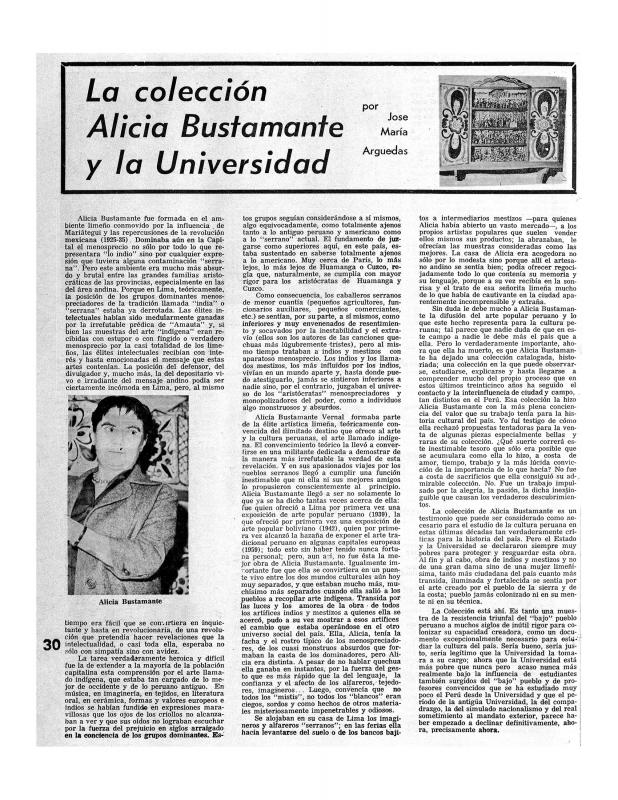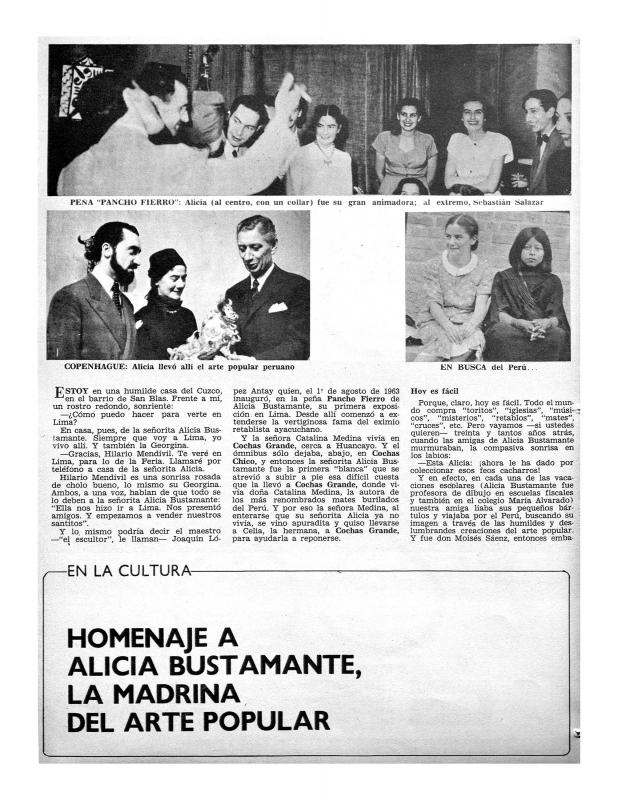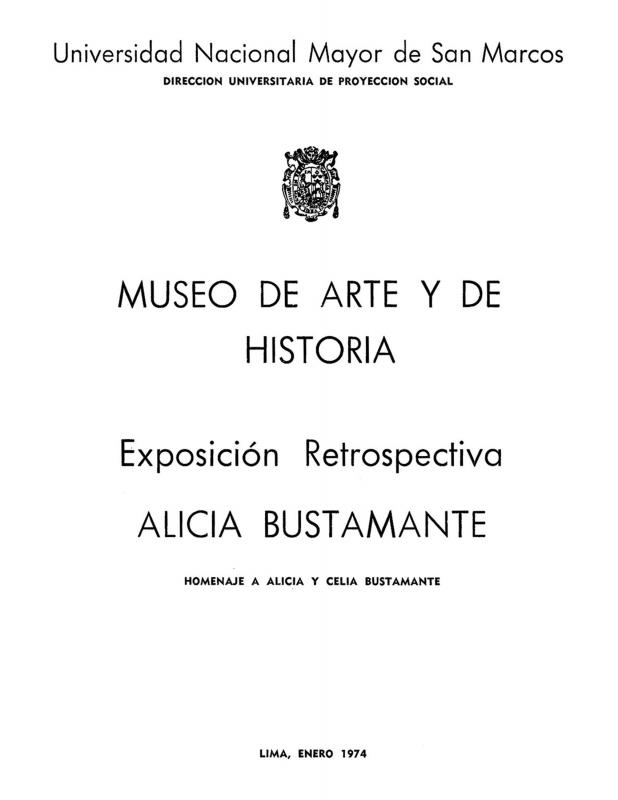This text was written by the journalist Elvira de Gálvez (b. 1929) due to the passing of Peruvian artist and pedagogue Alicia Bustamante (1907–68). The artists of the Indigenist movement, in their efforts in finding true “Peruvian art”, not only used local motives in their own creations but also began studies on the revaluation of popular visual arts. In order to do so, they traveled all over the country and began contacting native and mestizo artisans, whose names and works were later made known in the capital. One of the main artists in this movement was the Peruvian artist and pedagogue Alicia Bustamante, who studied at the Escuela Nacional de Bellas Artes, having as her teacher the founder of pictorial Indigenism, José Sabogal (1888–1956), a mentor who would strongly influence both her visual work and her interest in popular art. Although Bustamante produced many significant exhibitions of her work, as in Viña del Mar (1937), at the Peruvian-American Cultural Institute of Lima (1944), in La Paz (1944), and at the Galería Lima (1956), her greatest contribution was promoting popular art in the urban sectors, which was decisive in the country’s understanding of this new visual trend. Bustamante worked with Sabogal and with a group of indigenist artists at the IAP (Instituto de Arte Peruano) of the National Museum in order to study traditional art. At the same time, she began the first and one of the most important collections on Peruvian popular art, exhibited regularly at the Pancho Fierro group premises in Lima between 1936 through 1967, a place of many gatherings and debates on topics relating to politics, literature and art, promoted by Bustamante. These gatherings were attended by important personalities who followed Indigenist art, and others who identified themselves with developing avant-garde trends in Peru, such as César Moro (1903–56), Fernando de Szyszlo (1925–2017) and Jorge Eduardo Eielson (1924–2006), among others. When she died in 1968, Bustamante donated an important part of her collection to the Museo de Arte de la Universidad Nacional Mayor de San Marcos in Lima and another part to the Galería Latinoamericana de la Casa de las Américas in Havana, Cuba. [For further reading on this artist, please refer to the ICAA digital archive for the following texts: “La colección Alicia Bustamante y la universidad” by José María Arguedas (doc. no. 1139559); “De arte: la exposición pictórica de Alicia Bustamante” by M.F.F.I. (doc. no. 1139459); “En la cultura: homenaje a Alicia Bustamante, la madrina del arte popular” by Winston Orrillo (doc. no. 1139542); “La exposición de paisajes de Alicia Bustamante” by C. R. (doc. no. 1139476); and “Introducción” by Francisco Stastny (doc. no. 1139585)].





